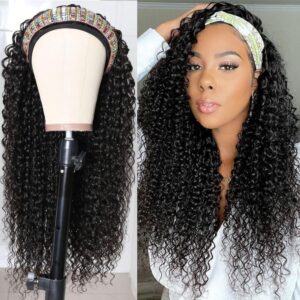Delivery Method: Via Email Product: Drugs Recipient:
Recipient Name
James Dakota Green
Vacation Inc.
936 SW 1st Ave #888
Miami, FL 33130
United States
vacation@vacation.inc Issuing Office: Center for Drug Evaluation and Research (CDER)
United States
WARNING LETTER
August 6, 2025
RE: 706039
Dear Mr. Green:
This letter is to advise you that on March 5th, 2025 the U.S. Food and Drug Administration (FDA) reviewed your product labeling, including your website, https://www.vacation.inc/, where your “Vacation® Classic WHIP BROAD SPECTRUM SPF 30 SUNSCREEN MOUSSE” and “Vacation® Classic WHIP GLOW BROAD SPECTRUM SPF 30 SHIMMER SUNSCREEN MOUSSE” drug products (hereinafter collectively referred to as “Classic Whip Sunscreens”) are available for purchase in the United States without a prescription. We also reviewed your social media on Instagram at “vacationinc” which directs consumers to your website to purchase your products.
Your “Classic Whip Sunscreens” are “drugs” as defined by section 201(g)(1)(B) of the FD&C Act, 21 U.S.C. 321(g)(1)(B), because they are intended for use in the diagnosis, cure, mitigation, treatment, or prevention of disease, and/or under section 201(g)(1)(C) of the FD&C Act, 21 U.S.C. 321(g)(1)(C), because they are intended to affect the structure or any function of the body.
Examples from the “Classic Whip Sunscreens” product labeling, including your website and social media page listed above, that provide evidence of the intended uses (as defined in 21 CFR 201.128) of the products as drugs include, but may not be limited to, the following:
“Vacation® Classic WHIP BROAD SPECTRUM SPF 30 SUNSCREEN MOUSSE” and “Vacation® Classic WHIP GLOW BROAD SPECTRUM SPF 30 SHIMMER SUNSCREEN MOUSSE”
“Uses ∙ Helps prevent sunburn ∙ If used as directed with other sun protection measures (see Directions), decreases the risk of skin cancer and early skin aging caused by the sun.” [from your product labels]
“BROAD SPECTRUM SPF 30 SUNSCREEN MOUSSE” [from your product labels]
“Vacation® Classic WHIP BROAD SPECTRUM SPF 30 SUNSCREEN MOUSSE”
“Classic Whip SPF 30 ‘Dessert For Your Skin’ SPF 30 Sunscreen Mousse…What it is ‘lighter-than-air’ sunscreen featuring an authentic ‘tilt valve’ actuator that produces perfect, star-shaped mountains of foam, inspired by everyone’s favorite after dinner indulgence.” [from your product website]
“…a decadent dessert for the skin that we like to call Vacation® Classic Whip. A Broad-Spectrum SPF 30 Sunscreen Mousse…But don’t be fooled by its appearance, because just like the rest of the Vacation® Brand Family of Products, this SPF gives your skin everything it needs to stay protected during long days by the pool…” [from your Instagram social media page]
“Vacation® Classic WHIP GLOW BROAD SPECTRUM SPF 30 SHIMMER SUNSCREEN MOUSSE”
“Classic Whip Glow SPF 30 ‘Classic Whip, Now With Shimmer’ SPF 30 Shimmer Sunscreen Mousse…What it is lightweight, ‘dessert-inspired’ sunscreen you know and love…” [from your product website]
“…With the new Vacation® Brand Classic Whip Glow, treat your skin to fluffy, glistening dollops of sunscreen mousse all at the gentle press of its authentic ‘tilt valve’…” [from your Instagram social media page]
Based on the above labeling, your “Classic Whip Sunscreens” are intended for use as over-the-counter (OTC) sunscreen drug products. No FDA-approved applications pursuant to section 505 of the FD&C Act, 21 U.S.C. 355, are in effect for your drug products. Section 505G of the FD&C Act, 21 U.S.C. 355h, governs the marketing of nonprescription drugs that are marketed without an approved application under section 505 of the FD&C Act, 21 U.S.C. 355, such as your products. Under section 502(ee) of the FD&C Act, 21 U.S.C. 352(ee), a nonprescription drug is misbranded if the drug is subject to section 505G of the FD&C Act, but does not comply with the requirements for marketing under that section and is not the subject of an application approved under section 505 of the FD&C Act, 21 U.S.C. 355.
Section 505G of the FD&C Act, 21 U.S.C. 355h, provides that certain nonprescription drugs are deemed to be generally recognized as safe and effective (GRASE) and not new drugs if they, among other things, conform to the conditions in the applicable OTC monograph. In the case of OTC sunscreen drug products, the applicable OTC monograph is set forth in the final administrative order, OTC000006: Over-the-Counter Monograph M020: Sunscreen Drug Products for Over-the-Counter Human Use (hereinafter M020), which was deemed a final order by 505G(b)(8) and 505G(k)(2)(B).1 However, under section 505G(m)(2), “notwithstanding subsection [505G](a),” sunscreens in dosage forms other than oil, lotion, cream, gel, butter, paste, ointment, stick, spray, and powder may only be lawfully marketed, without an application approved under section 505 of the FD&C Act, pursuant to an order issued under section 505G of the FD&C Act.2 To date, no final order has been issued by the Secretary under 505G(b) or 505G(c) that would authorize marketing of a sunscreen in foam (aka, mousse or whip) dosage form.3 As previously stated, there are no FDA-approved applications in effect for your drug products.
Thus, even if your products were in conformity with the conditions set forth in M020 and all other applicable requirements to be deemed GRASE and not new drugs under section 505G(a)(1), they do not comply with the requirements under section 505G. Accordingly, your “Classic Whip Sunscreens” are misbranded under section 502(ee) of the FD&C Act, 21 U.S.C. 352(ee).
Furthermore, your “Classic Whip Sunscreens” are misbranded under Section 502(i)(1) of the FD&C Act, 21 U.S.C. 352(i)(1), which provides that a drug is misbranded if “its container is so made, formed, or filled as to be misleading,” because they are packaged in containers that resemble food canisters customarily purchased by U.S. consumers. Specifically, your sunscreens are presented in metal canisters with a “authentic ‘tilt valve’ actuator” that outputs a star-shaped foam and have a strong overall resemblance to the metal canisters ordinarily used to package whipped cream products and similar dessert toppings.4 Packaging drug products in containers that resemble food containers commonly used by adults and children can mislead consumers into mistaking the products for food, which is of particular concern as this increases the risk of accidental ingestion.
The introduction or delivery for introduction of misbranded drugs into interstate commerce violates section 301(a) of the FD&C Act, 21 U.S.C. 331(a).
Conclusion
The violations cited in this letter are not intended to be an all-inclusive list of violations that may exist in connection with your products. You are responsible for investigating and determining the causes of any violations and for preventing their recurrence or the occurrence of other violations. It is your responsibility to ensure that your firm complies with all requirements of federal law, including FDA regulations.
This letter notifies you of our concerns and provides you an opportunity to address them. Failure to adequately address this matter may result in legal action including, without limitation, seizure, and injunction.
Please notify FDA in writing, within 15 working days of receipt of this letter, of the specific steps you have taken to correct any violations. Include an explanation of each step being taken to prevent the recurrence of violations, as well as copies of related documentation. If you believe that your products are not in violation of the FD&C Act, include your reasoning and any supporting information for our consideration. If you cannot complete corrective action within 15 working days, state the reason for the delay and the time within which you will complete the correction. Your response should be sent to U.S. Food and Drug Administration, CDER/OC/Office of Unapproved Drugs and Labeling Compliance by email to FDAAdvisory@fda.hhs.gov and include your firm name and the unique identifier “706039” in the subject line of your email.
Sincerely,
/S/
Tina Smith, M.S.
Captain, U.S. Public Health Service
Director
Office of Unapproved Drugs and Labeling Compliance
Office of Compliance
Center for Drug Evaluation and Research
U.S. Food and Drug Administration
______________________
1 See sections 505G(a)(1) and (2) of the FD&C Act and see Order ID OTC000006, available at FDA’s website OTC Monographs@FDA, https://dps.fda.gov/omuf. As required by section 505G(a)(2), M020 encompasses the requirements specified in part 352 of title 21, Code of Federal Regulations, as published on May 21, 1999, beginning on page 27687 of volume 64 of the Federal Register, except that the applicable requirements governing effectiveness and labeling shall be those specified in section 201.327 of title 21, Code of Federal Regulations.
2 Section 505G(m)(2) provides that “[n]otwithstanding subsection [505G](a),” a drug that, “prior to the date of the enactment of this section [March 27, 2020], the Secretary determined in a proposed or final rule to be ineligible for review under the OTC drug review” (emphasis added) may not be legally marketed without an approved NDA or ANDA except as “pursuant to an order issued under this section”. In a 2019 proposed rule, FDA determined that sunscreens in all dosage forms other than oil, lotion, cream, gel, butter, paste, ointment, stick, spray, and powder were ineligible for review under the OTC Drug Review under the then-operative requirements because we did not receive data showing that they were marketed prior to 1972. 84 FR 6204 at 6229-6230 (Feb. 26, 2019); see also 84 FR 6204 at 6206 and 6272. Therefore, under section 505G(m)(2) of the FD&C Act, a sunscreen in any dosage form other than the ten dosage forms listed above may only be marketed with an approved application, unless FDA determines otherwise in an order issued under section 505G of the FD&C Act. To date, no final order has been issued by the Secretary under 505G(b) or 505G(c) that would authorize marketing of sunscreen in a foam, mousse, or whip dosage form.
3 Your labeling appears to use these three terms interchangeably to describe your product: the principal display panel, as well as other labeling, refers to each product as “mousse” and “whip”, while other labeling cited above describes each product as a foam. “Foam” is the dosage form term in United States Pharmacopeia (USP) general chapter <1151>, Pharmaceutical Dosage Forms, that best corresponds to your product; neither “whip” nor “mousse” are used in that reference.
4 Your website and social media, including those cited above emphasize the visible similarity between the container for your sunscreens and whipped cream containers. For example, your website states “What it is ‘lighter-than-air’ sunscreen featuring an authentic ‘tilt valve’ actuator that produces perfect, star-shaped mountains of foam, inspired by everyone’s favorite after dinner indulgence.” You worked with the original developer of Reddi-wip® to develop your containers. See ClaytonCorp.com (last visited March 7, 2025) (indicating both that “Clayton Corp. created the first aerosol food product with the invention of Reddi-Wip®” and that the “Clayton Corporation recently partnered with the sunscreen brand Vacation® to develop an aerosol solution for their air whipped formula” with a photograph of your Classic Whip SPF 30 Sunscreen container.)






